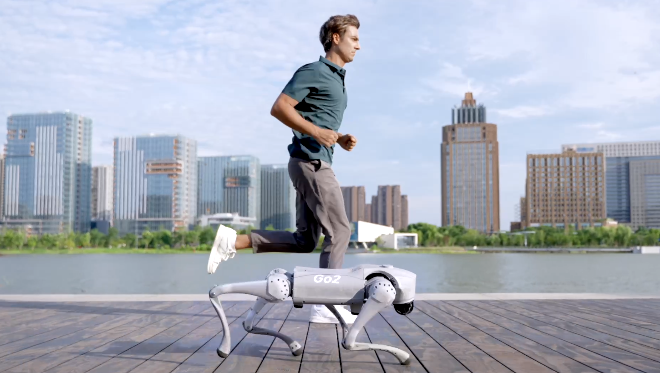The Versatility of Robotic Dogs: Pioneering Companions for a Futuristic World
admin
February 21, 2024

In the realm of technological advancements, robotic dogs have emerged as a fascinating blend of innovation and versatility, marking their presence across various sectors. From providing companionship in homes to undertaking complex tasks in industries, these mechanical canines are redefining the boundaries of what robots can do.
Unleashing Potential Across Industries
The inception of robotic dogs was initially met with skepticism; however, their potential quickly became apparent. In law enforcement, they are deployed for reconnaissance missions, leveraging their agility and durability to navigate treacherous terrains without risking human lives. Their sophisticated sensors and cameras act as the eyes and ears of the force, making them invaluable assets in critical situations.
In the domain of healthcare and therapy, robotic dogs offer companionship and comfort to those in hospitals and eldercare facilities. Unlike real pets, these robots don’t trigger allergies and require no maintenance, making them perfect companions for individuals with specific health needs. Their interactive capabilities and friendly demeanor help reduce stress, loneliness, and anxiety among patients, showcasing a softer side of technology.
Exploration is another field where robotic dogs shine. Equipped with state-of-the-art navigation systems, they traverse aquatic depths and space’s vastness, places where human presence is limited or impossible. Their design allows them to gather data and samples, contributing significantly to scientific research and discovery.
Engineering and Design: A Leap into the Future
The engineering marvel behind robotic dogs is nothing short of revolutionary. With features like ultra-wide 4D LIDAR, voice interaction, and artificial intelligence, they can understand and adapt to their environment, making decisions in real-time. Upgrades like the ISS2.0 Intelligent Side-follow System enhance their navigation capabilities, allowing for precise positioning and improved obstacle avoidance strategies.
The advent of OTA (Over-The-Air) updates ensures that these robotic dogs continuously evolve, gaining new functionalities and improvements without the need for physical modifications. This aspect of continuous improvement highlights the forward-thinking approach in their design, ensuring longevity and relevance in the fast-paced world of technology.
A Companion for All Seasons
Beyond their utility, robotic dogs represent a new form of interaction between humans and machines. They offer a glimpse into a future where robots could become our companions, helpers, and protectors. The emotional bonds that people form with these machines are testament to their sophisticated design, which not only seeks to replicate the appearance of a dog but also emulates its behavior and interactions.
The Road Ahead
As we stand on the brink of a new era in robotics, the versatility of robotic dogs continues to inspire awe and excitement. Their potential to adapt and thrive in various environments, coupled with continuous advancements in technology, promises a future where robotic dogs could become an integral part of our daily lives. From assisting in emergency response operations to providing comfort and companionship, these robotic canines are not just a testament to human ingenuity but a beacon of hope for pioneering a world where technology and humanity converge for the greater good.
In conclusion, the journey of robotic dogs from novelty items to versatile, multifunctional robots highlights a significant leap in robotics and artificial intelligence. As they continue to evolve, their impact on society is expected to grow, blurring the lines between biological and mechanical, and forging a new path for the future of companionship and utility.


Hi, this is a comment.
To get started with moderating, editing, and deleting comments, please visit the Comments screen in the dashboard.
Commenter avatars come from Gravatar.